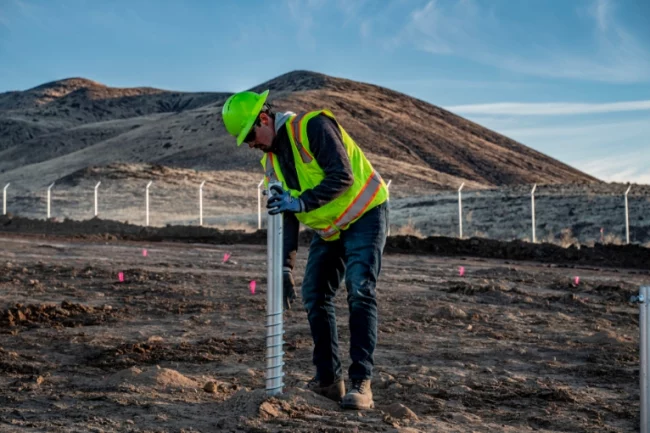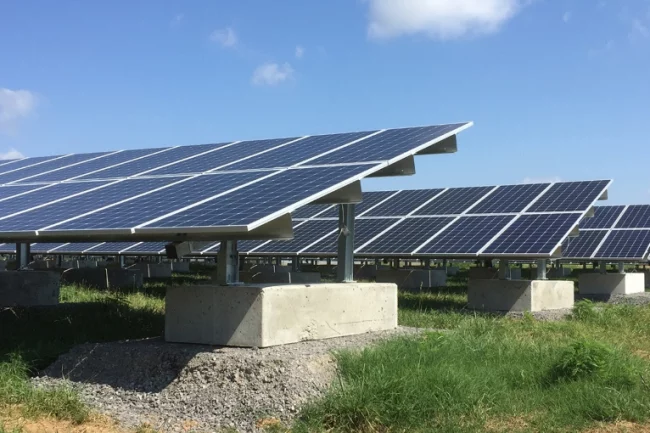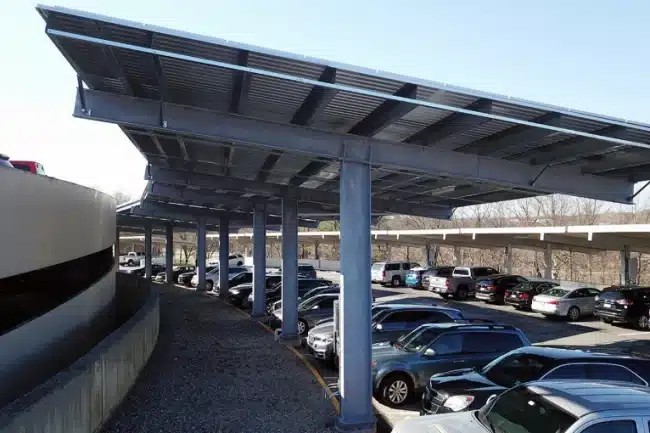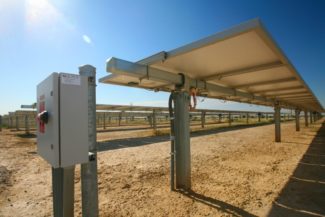When an experienced California solar developer began penciling out a new project, he faced a labyrinth of complex options. With an interconnection limit of 105 megawatts, the project needed to maximize value while simultaneously optimizing for the lowest PPA. Adding to the complexity were different module technologies — both CdTe and cSI panels — as well as various configurations using single-axis trackers and 3MWac central inverters.
A few years ago, the developer would have been forced to use common assumptions to reach a nameplate capacity estimated to be slightly higher than the interconnection limit. Even to do that, he would have had to work with pricey consultants or internal teams over several weeks to evaluate various site configurations before coming up with an optimized system. Despite putting out the time and money to do these things, there was no certainty that the effort would result in the most competitive bid.
With Solar’s Instant Feasibility Tool (SIFT), however, getting the best possible start on a solar project is no longer a guessing game. SIFT can assess each project’s unique profile to maximize value and increase return on investments from the start. Iterating through thousands of site layouts and PV component configurations, plus billions of data points such as weather and financial calculations, SIFT uncovers the hidden value in every project up front in a matter of seconds.
Using SIFT, the Southern California developer was able to optimize his project with confidence, ultimately increasing his PPA’s competitive advantage 4.36 percent and reducing installation costs by $21 million.
SIFT sets the tone from the start
SIFT is a fundamental transformation of the solar software roadmap. Designed to be used at the start of a project — long before AutoCAD or PVSyst come into play — SIFT crunches the numbers needed to create a data roadmap that can guide a project from genesis through final execution.
By maximizing value through a granular feasibility analysis, SIFT’s opportunity evaluation can feed into midstream design tools to direct project execution without change orders and other factors that can erode margins.
Recent data from Sunfig shows SIFT has helped developers and asset owners increase their internal rates of return by five to 15 percent on projects totaling 250 GWs of potential capacity. Sunfig’s powerful SIFT platform streamlines complex projects, resulting in more profitable solar investments.

Getting under SIFT’s hood
Confidence and accuracy are key to SIFT’s success. Layout, performance, and financial modeling all help guide the tool toward viable solutions. Easy-to-use and reliable topography data from the U.S. Geological Survey and Google Earth ensure accurate slope analysis. As the first project feasibility tool to include a comprehensive financial modeling platform, SIFT can optimize projects against IRR, LCOE, or NPV objectives.
Ultra-fast computing lets developers shave weeks off project assessment periods. SIFT’s multi-configuration system uses an efficient cloud architecture to maximize value on projects up to 1 GW in under a minute.
Using SIFT, developers can import data from industry databases like PAN, OND, and PVSyst and can export data in XLS and CAD formats. Because it is browser-based, SIFT is platform agnostic, giving developers easy and instant access to their projects anywhere and at any time.
Making decisions up front for efficient execution down the road
As an early-stage development and planning tool, SIFT is used at the very beginning of the project development cycle. SIFT’s proprietary algorithms analyze hundreds of potential layouts, detailed site conditions, and a variety of performance goals and financial models. The tool then can optimize systems upstream to unlock value and boost profitability as a project progresses.
Long before PV design and financial tools come into play, SIFT crunches data to direct your project strategy. It’s a faster, easier, and more accurate way to maximize project returns and unlock hidden project value early on to reduce project risk.
SIFT allows developers to stop guessing and hoping, and start projects using actual data from the get-go.
Modernizing project feasibility
SIFT turns the conventional feasibility study process on its head. Without SIFT, developers rely heavily on assumptions and guesswork over several weeks to define optimal project configurations. Even then, they might only be able to evaluate a few options during each feasibility study round. The traditional approach — deploying engineers for design layout and performance and analysts to develop financial models — creates organizational silos. These conflicting sets of data can create contradictory performance metrics that miss cross-functional synergies.
SIFT, however, analyzes everything as a coherent whole, leading to more efficient system configurations, more cohesive project roadmaps, and stronger overall returns.
Boosting competitive advantage
Developers large and small face the same dilemma: how to improve early-stage development planning to maximize returns and lower risks. SIFT provides the digital intelligence needed to power confident solar decision making. Whether increasing PPA competitiveness, optimizing for IRR and time-of-use, or reducing installation costs, SIFT leverages unique advantages that put developers ahead from the start.









